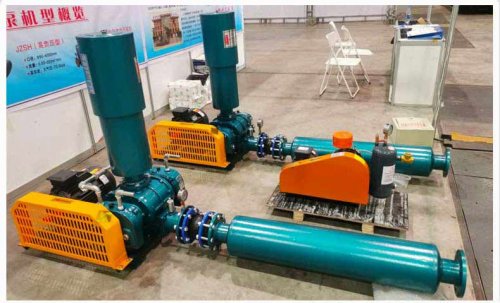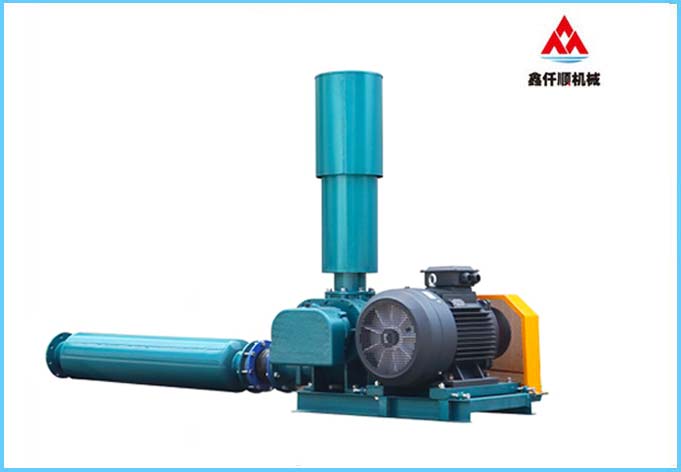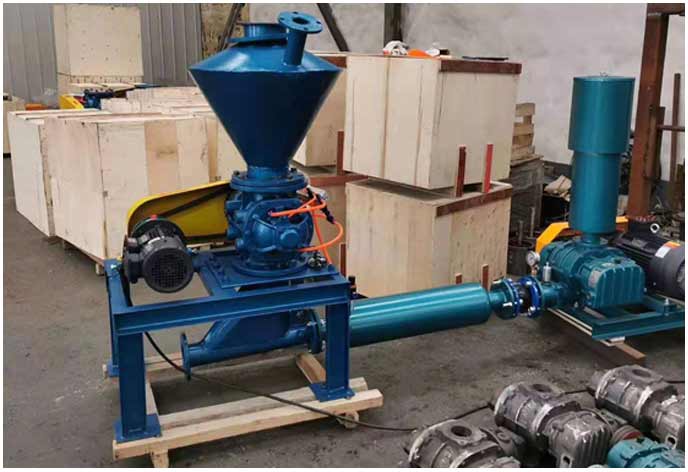Have you ever encountered a burning motor when using a high-pressure roots blower? What is the cause of this phenomenon? Today, we will explain why in detail.
This is the killer of three-phase asynchronous motor. When the motor operates normally, the three-phase load is symmetrical, so the three-phase current is basically balanced and the size is equal. If the motor is out of phase during operation (the phenomenon of three-phase winding disconnecting any phase is called no phase, the fan vibration will become larger, the high-voltage roots blower will have abnormal sound, the speed will decrease, the current will decrease and increase, the motor temperature will rise sharply, resulting in the motor burning out. The motor of normal quality will burn out in dozens of minutes. The terrible thing is that the whole power supply system is in phase failure. In addition, many equipment switches are self-locking or automatically open (such as fans and pumps). After power failure, the transmission phase loss accident may burn more than a dozen motors.

Due to the long-term uninterrupted operation of the high-pressure roots blower, the temperature rise of the motor body is too high, and the bearing will not be dehydrated until the bearing is damaged, the shaft is bent and the belt is broken, which will lead to the stator and rotor. Friction (commonly referred to as broom) leads to a sharp rise in core temperature, insulation of combustion slot, turn to turn insulation, winding turn to turn short circuit or "shooting" on the ground. In severe cases, the stator core may be inverted, misaligned, the shaft may be worn, and the end cover may be scraped off. Bearing damage is usually caused by the following reasons: 1. The bearing is improperly assembled. If the bearing inner race is impacted unevenly during cold assembly, the shaft will be worn, resulting in interference loss between the bearing inner race and outer race, or the interference will be reduced, and the inner race phenomenon will occur. When the door is not evenly tapped, the outer ring of the end bearing seat and shaft is too loose to make the outer ring run. Both the inner ring and the outer ring of the high-pressure roots blower will cause the bearing temperature rise to rise sharply. As long as the bearing is intact, it is allowed to run the outer ring intermittently.
2. The bearing wall is not clean, or the lubricating grease is not clean. For example, the bearing keeps the tiny steel material thoroughly clean, and the operation is the damage caused by the bearing rolling to too high temperature.
3. Replace the bearing again. After the high pressure roots blower motor end cover is nested, the interference is very large or the ovality exceeds the standard, resulting in too small or uneven bearing ball clearance, resulting in increased friction during bearing operation, and a sharp rise in temperature until combustion.
4. Due to the axial misalignment of stator and rotor iron cores or insufficient precision after machining the shaft, the inner and outer rings of the bearing are not on the same cutting surface, resulting in the bearing "eating differently", and then the temperature rises until burning.
5. Bearing damage caused by mixing different types of grease.
6. The bearing body has quality problems, such as rust on the raceway, inflexible rotation, too small clearance, deformation of the cage, etc.
7. The standby machine does not operate for a long time, the lubricating grease deteriorates, and the bearings are rusted. Only regular inspection and replacement of lubricating grease can be carried out.
Shandong Xinqianshun Machinery Co., Ltd. is a professional supplier of high pressure roots blowers integrating design, development and sales Roots blower Roots blower, centrifugal blower, rotary blower, single-stage high-speed centrifugal blower, countercurrent cooling vacuum pump. It mainly produces Roots blower, which absorbs advanced technology and relies on a new generation of high-efficiency and energy-saving products developed by scientific research institutes. With reasonable structure, small size, high efficiency, low noise, stable operation, long service life, convenient maintenance and other characteristics, it is widely used in sewage treatment, mining, metallurgy, chemicals, building materials, electricity, light industry, flour, aquaculture and other fields. Over the years, it has been well received by users.










